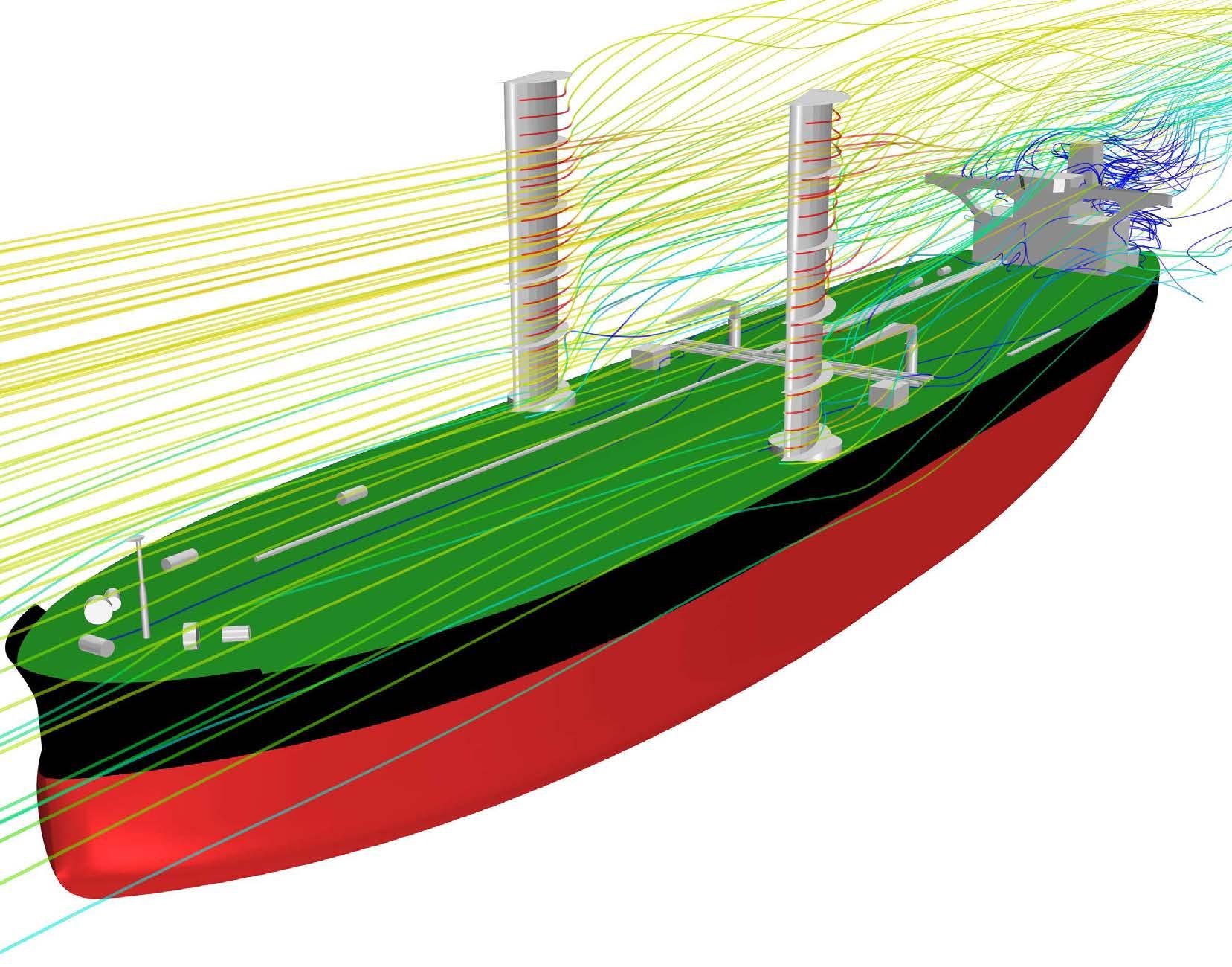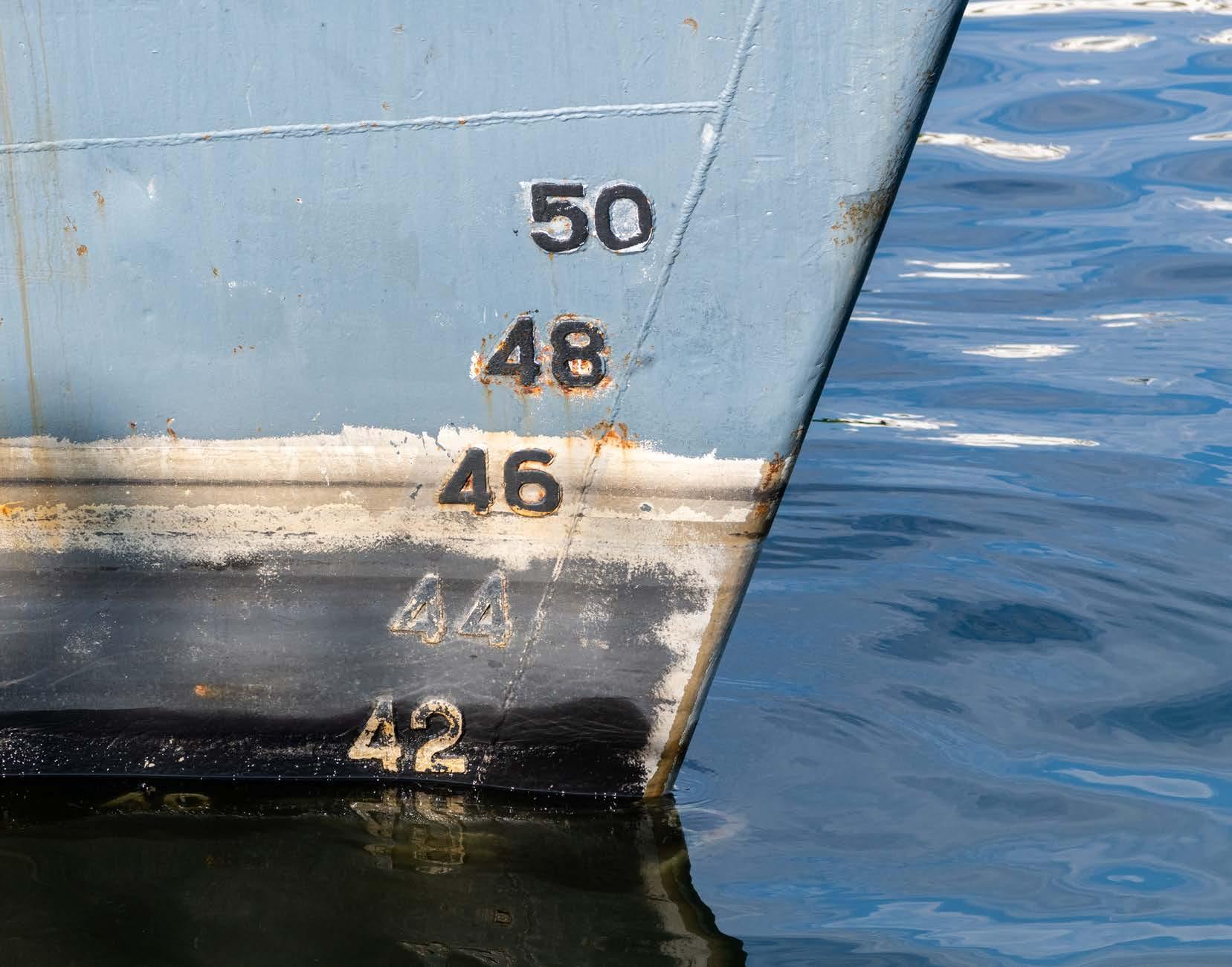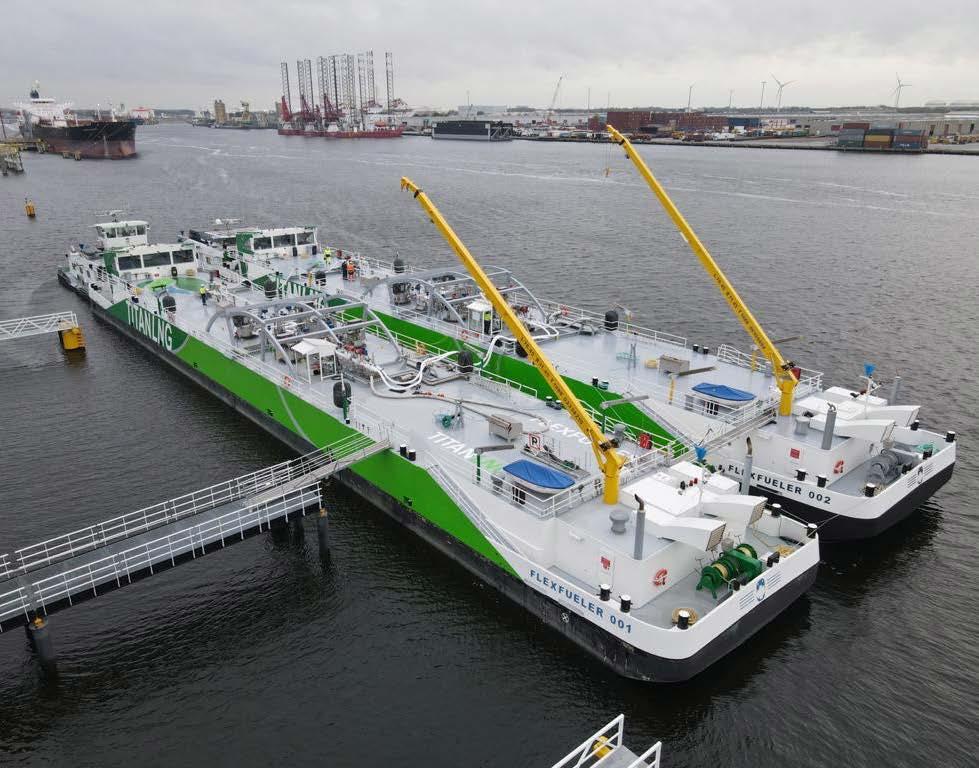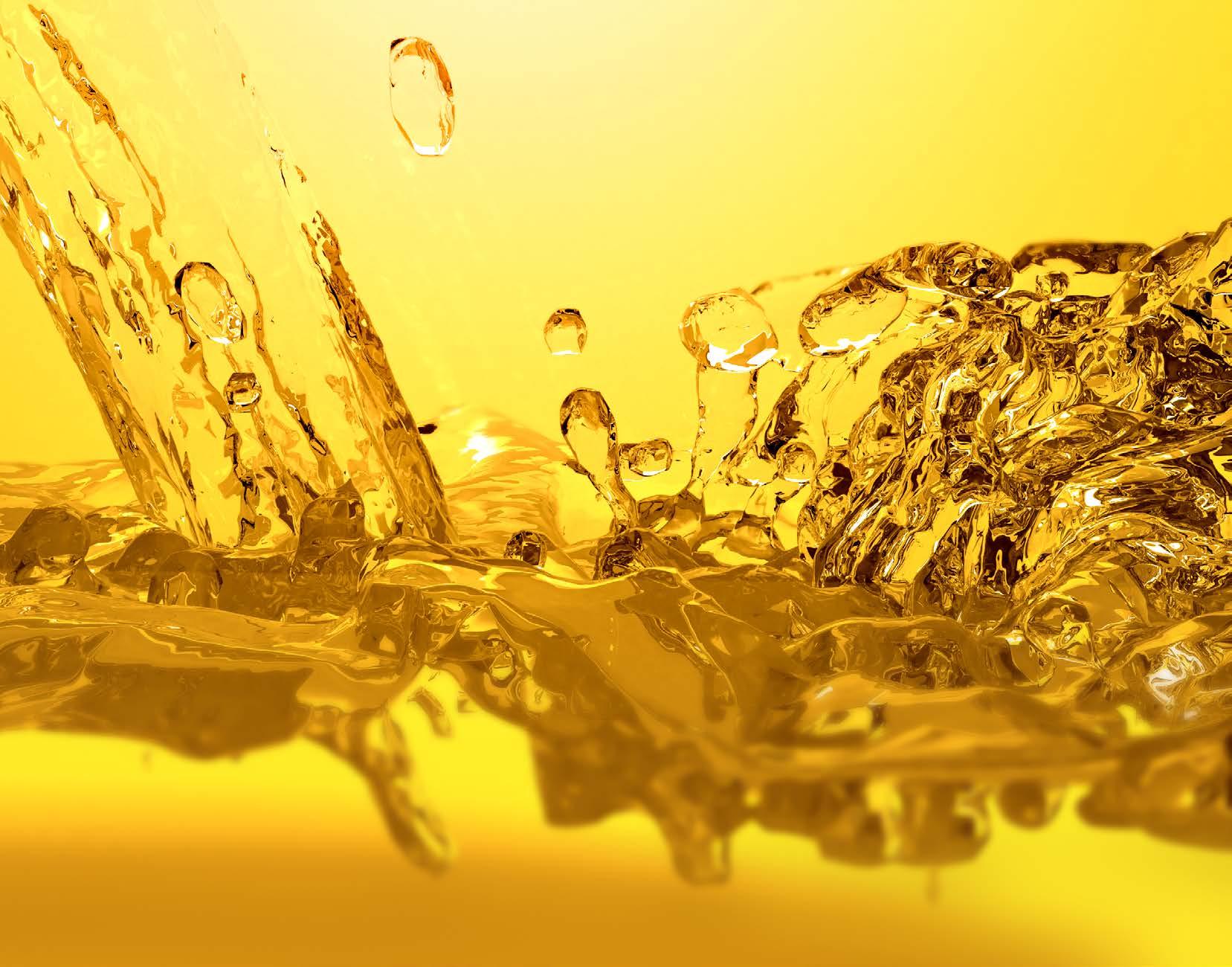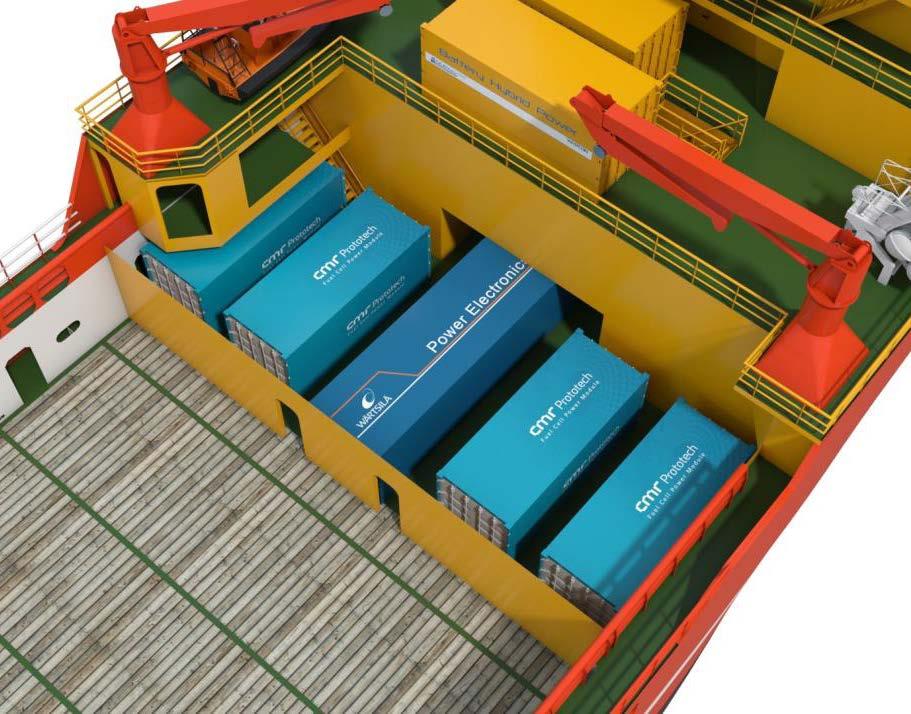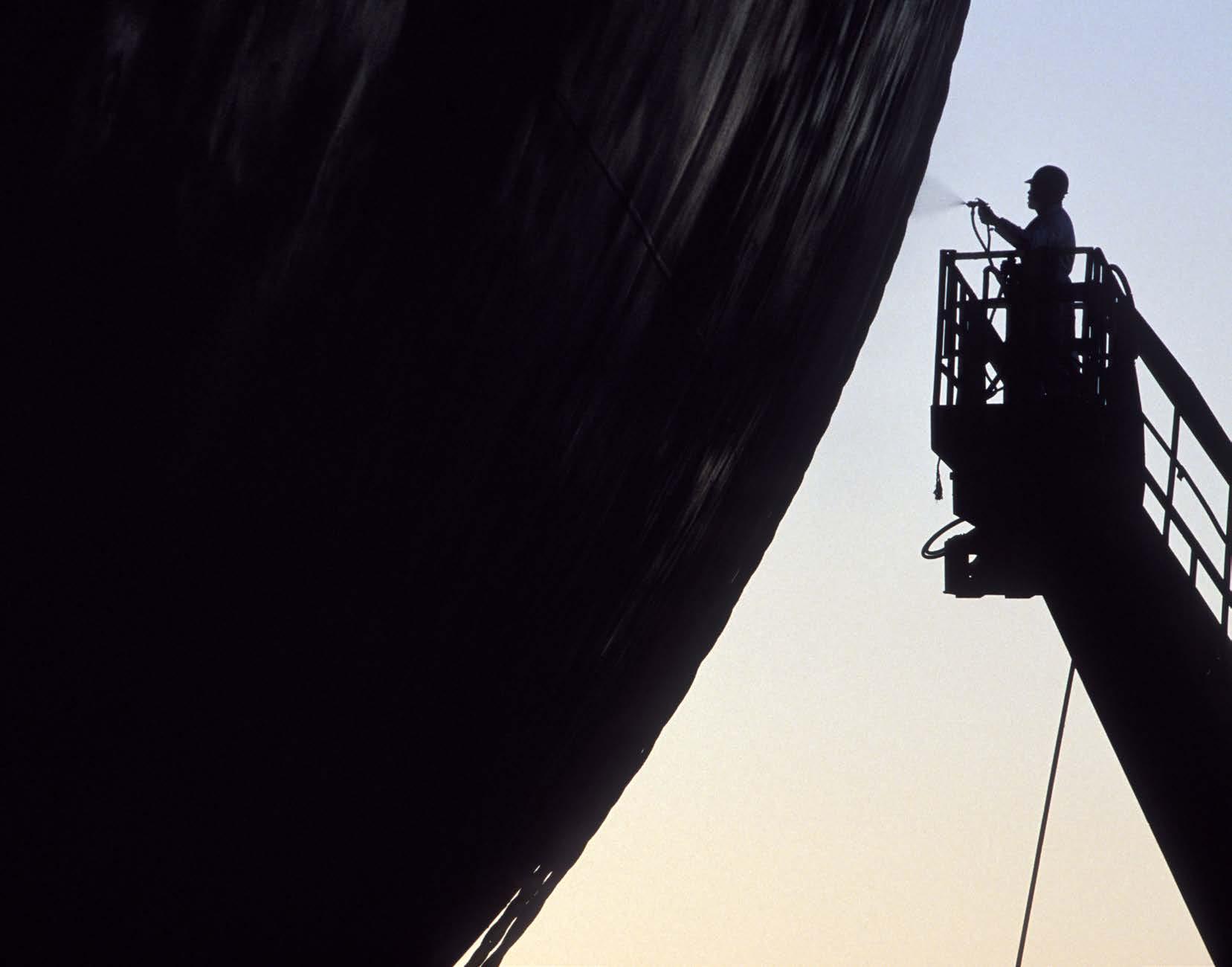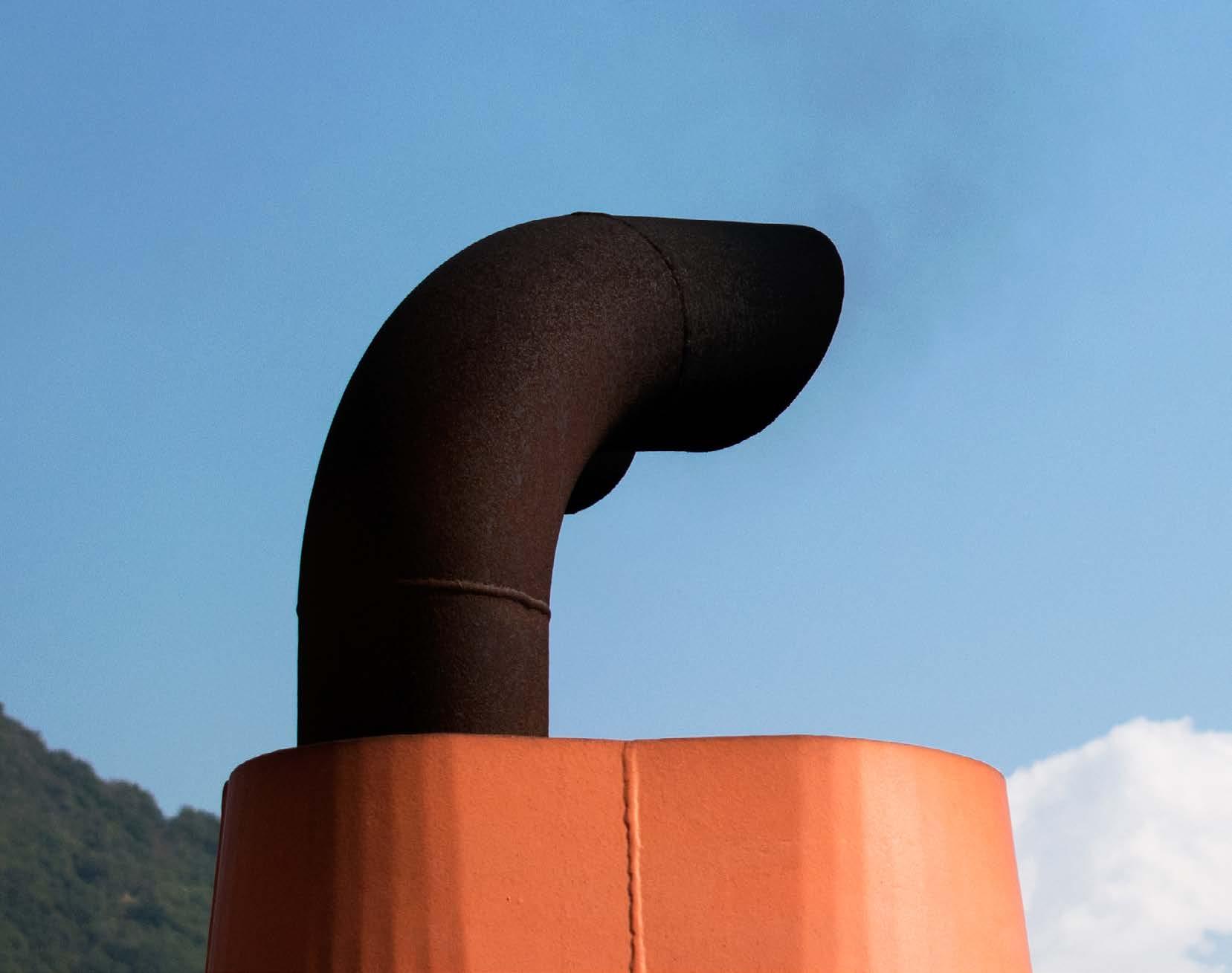
8 minute read
WE NEED TO ACT NOW!
from CSI Spring 2021
by Maritime-AMC
Ian Cochran Editor, Clean Shipping International
To get to net zero emissions, what ship and equipment designs will be needed in the future? What do we need to do now – and how?
These are the main questions on shipowners lips, as they strive to comprehend the sheer number of solutions being thrown at them to reach the International Maritime Organization’s (IMO) goal.
The net result of all of these initiatives is to polarise the industry into separate camps, especially in the near term, until a universally accepted solution is found.
Of course, impending regulations also need to be fit for purpose, as down the years, several have proved to be impracticable.
Flexibility will be key going forward with a combination of technologies coming together to solve the problem.
With a new fuel will come new engine designs and supply chain logistics to make it work. But as one leading shipowner said in a recent webinar: “Let’s concentrate on what is possible today.”
The so called e-fuels look as though they are going to be very expensive, but with further research and development, the cost will come down – but will it be to the level of today’s options?
As it has been pointed out time and time again, an importer of soya beans into China will not care about how his or her cargo is shipped, only the cost involved.
In the container trades, major shippers, such as Amazon, Walmart and so on, are getting more involved in how goods are shipped, as are the major trading houses. All are claiming to be turning “green”.
PROBLEM WITH CLAUSES
One problem, recently highlighted by a leading drybulk broker, is that a standard charterparty does not include any clauses on the amount of emissions the ship involved emits, thus not declaring a carbon footprint.
A charterparty also rarely depicts alternative fuel use, such as wind-assisted ships, although with Cargill and other major charterers becoming involved, this is gradually changing.
Proper measurements still need to be developed – no measurement, no improvement, as the old saying goes.
Despite the clock ticking, shipowners are still ordering standard ships with standard equipment installed, except for LNG-ready and other designs, which have proved to be expensive to retrofit. Further down the road, ammonia will need large storage space on board the vessel.
A standard design is purely down to costs, as large shipyards normally offer a standard package at a set price with the owner paying for any extra add-ons, such as scrubbers.
Methane, hydrogen and other alternative fuels currently doing the rounds have huge challenges ahead before they become commercially viable alternatives to what is on offer today, both technically and commercially.
The bunkering and storage infrastructure of, say, hydrogen will take several years to develop – maybe not at all without a sound business case.
BIGGEST BURNERS
For example, out of the world fleet, it has been estimated that 20,000 vessels burn around 80% of the mainstream fuels. Drybulk still makes up the largest vessel sector and tends to involve tramp ships that will often not know the next destination once their current voyage is completed.
World trade is forecast to double by 2050, just at the time when the shipping industry should be reaching net zero emissions. To cope with this huge demand, more ships will obviously be needed.
This is only 30 years away, just over a ship’s lifecycle, so we need to be investing in new ideas, technology and designs now and ensuring they are workable both in technological and economic terms.

As Founding Chair of the newly formed GloFouling Alliance, Darren Jones is tasked with bringing together industry leaders to tackle two pressing IMO environmental objectives, a remit that has far-reaching effects, he tells Clean Shipping International
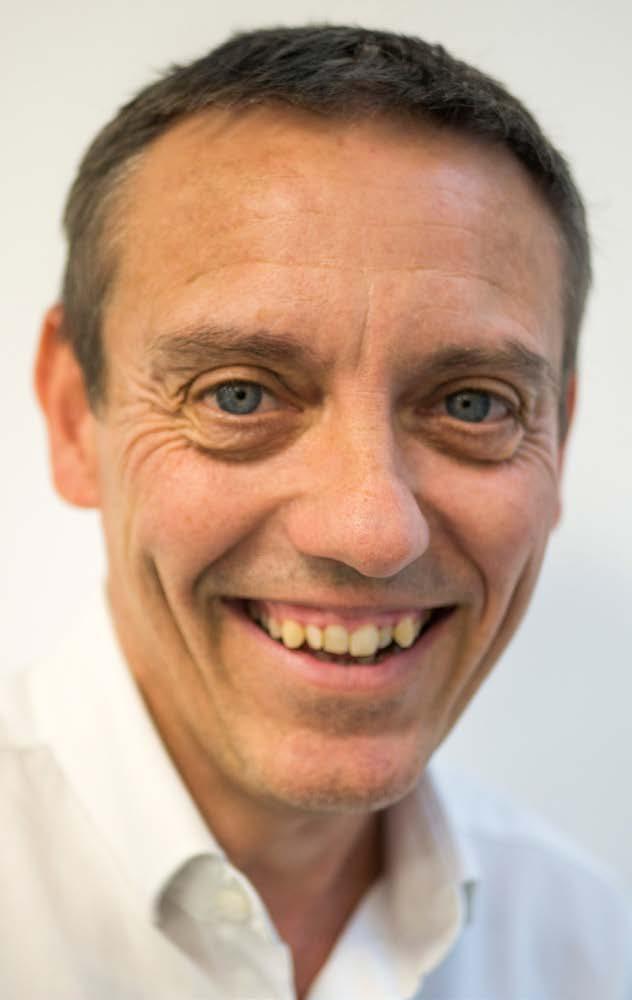
Darren Jones Director, Sonihull
TIME TO TACKLE THE INVADERS
Darren Jones, director of Ultrasonic antifouling system provider Sonihull is taking up the Founding Chair of the International Maritime Organization’s (IMO) GloFouling Alliance (GIA).
To give it its full title, he is Chair of the Global Industry Alliance (GIA) for Marine Biosafety, part of the IMO’s GloFouling Partnerships project, often shortened to the “GloFouling Alliance”.
The GIA was launched in June 2020 to bring together shipping industry stakeholders, the private sector and global regulators to address the impact of biofouling on greenhouse gas (GHG) emissions and the transfer of harmful aquatic species.
In essence, the partnership is a collaboration between the Global Environment Facility (GEF), the United Nations Development Programme (UNDP) and the IMO.
Also involved are more than 50 strategic partners, which include government agencies, industry associations, international non-governmental organisations (INGOs), academia and other international and regional inter-governmental organisations that share the same goal.
Jones explains that GloFouling is a global initiative, designed to bring together committed leaders from maritime, shipping, ocean energy, aquaculture and other ocean-based industries, to support two pressing IMO environmental objectives via improved biofouling management — namely, to protect marine biodiversity and decarbonise shipping.
“Environmental” no longer means “expensive”, he says. Done correctly, preventing biofouling will be the exact opposite. Carbon and costs can both be reduced with existing technologies and that means that all countries can benefit from a united approach, especially those whose marine environments and livelihoods are most likely to be damaged by invasive species.
Explaining the task ahead, he says that, in a nutshell, the aim of the GIA is to tackle two of the most pressing environmental issues of our time — invasive species and GHG

Corvus Energy has tapped into Toyota’s 30 years of fuel-cell experience to form a partnership that will enable large-scale production of fuelcell systems for the maritime industry

Geir Bjørkeli Chief Executive Officer, Corvus Energy
CORVUS ENERGY IN
TOYOTA TIE-UP
Bergen-based energy storage company Corvus Energy is to start the development and production of large scale maritimecertified hydrogen fuel-cell systems.
Production will be located in Bergen in a tie-up with Toyota as a key partner, which has the ability to supply mass-produced fuel-cell technology.
Corvus is heading up the collaborative project with Norwegian partners Equinor, shipowners Norled and Wilhelmsen, ship design company LMG Marin, the NCE Maritime CleanTech cluster and R&D institution The University of South-Eastern Norway (USN) to develop and produce modularised and cost-effective proton exchange membrane (PEM) fuel-cell systems for the marine market.
The project has received €5.2m in funding from Norwegian state agency Innovation Norway. The first marine fuel-cell system is scheduled to be fitted on a vessel in 2023 and the product will be marine certified and available for commercial delivery from 2024.
Fuel-cell modules will be supplied by Toyota, which boasts 30 years of experience in the development and production of fuel cells for the automotive market and other land-based applications.
Corvus and Toyota signed a partnership agreement in December last year, which gives Corvus access to mature fuel-cell technology while enabling large-scale production with competitive pricing, Corvus CEO Geir Bjørkeli said at a recent presentation.
Interest in hydrogen for maritime applications has been increasing rapidly and is seen as an important step to reach shipping’s ambitious goal to cut greenhouse gas emissions by 50% by 2050, Toyota’s senior manager strategy and business development, Fuel Cell Business Group, Freddy Bergsma said.
Reducing the cost of fuel cells and increasing access to the technology is crucial in accelerating the transition. Corvus claimed that this initiative was an important step towards achieving both goals by producing modularised systems not available on a large scale today. “Adding fuel-cell modules to our product portfolio is
The Hamburg Fleet Performance Centre Data quality is often lacking in ship operations’ reporting, with just the basics taken into account, Madeleine Engelhardt, product manager at weather intelligence and decision support services provider StormGeo tells Clean Shipping International
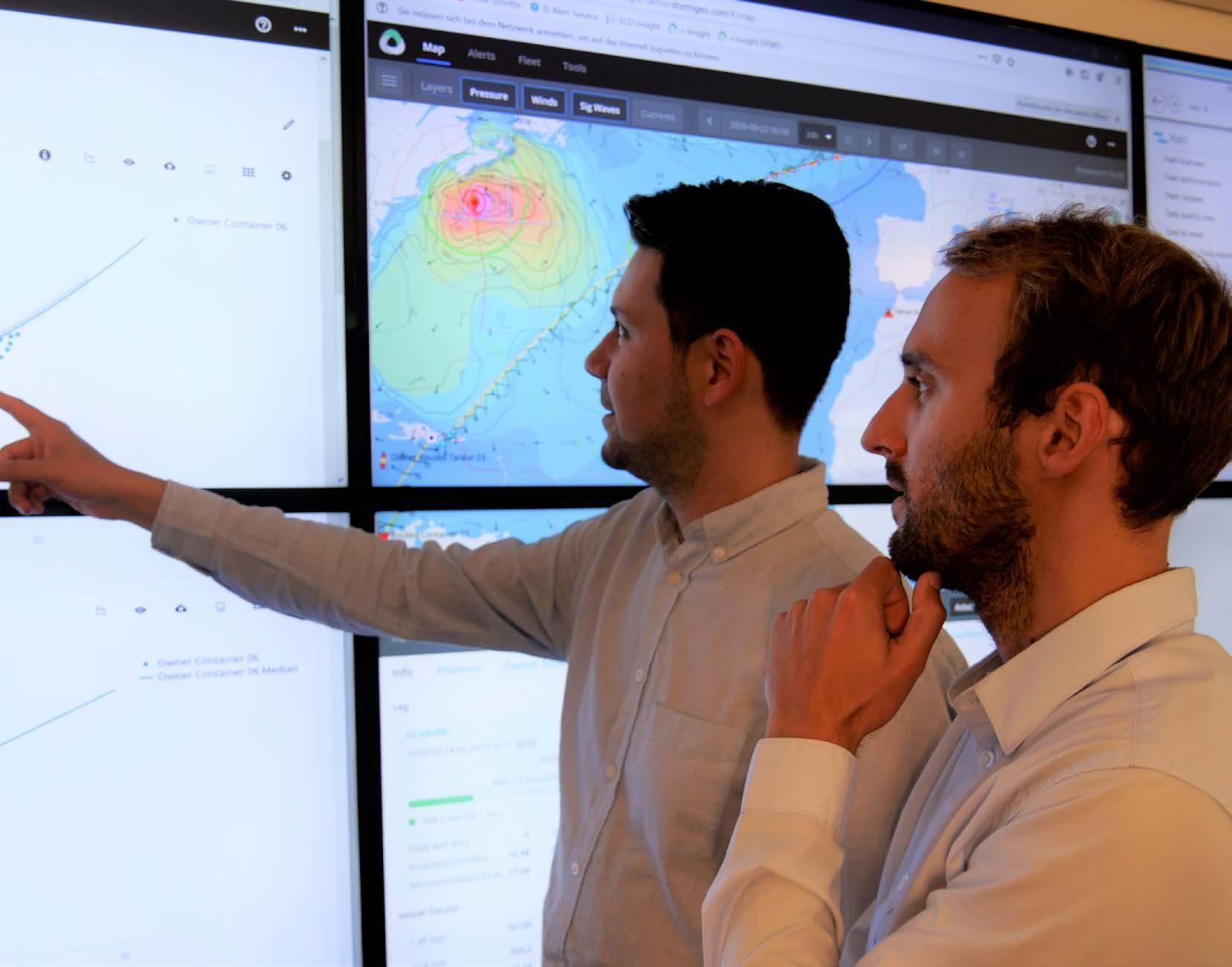
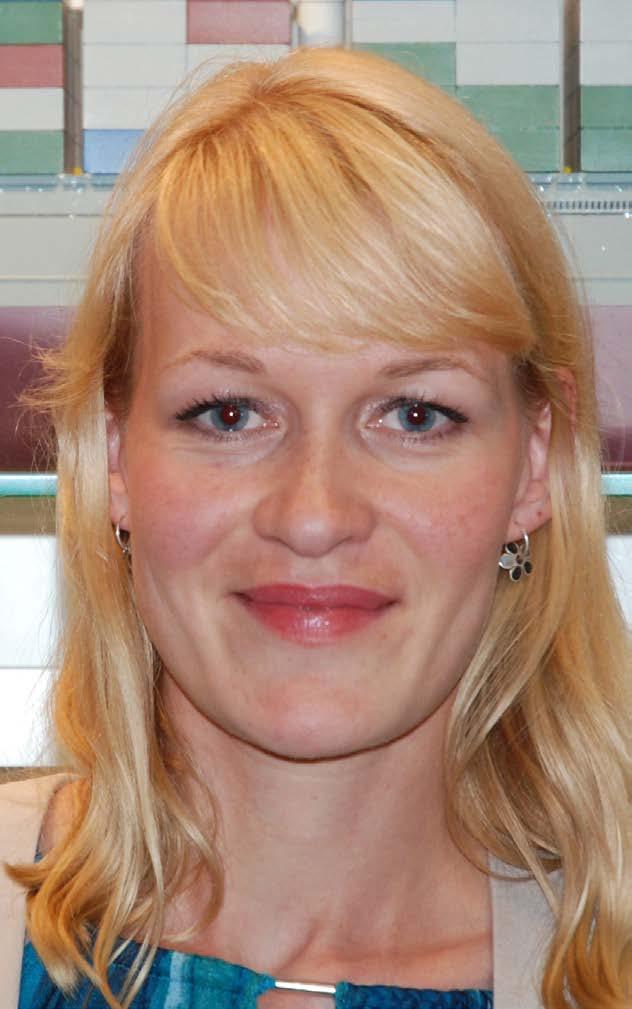
Madeleine Engelhardt Product Manager, StormGeo
HOW DATA REVEALS THE TRUE PICTURE
Drawing on her seagoing and shoreside experience with DNV GL, Offen Group among others, Madeleine Engelhardt, product manager at weather intelligence and decision support services provider StormGeo, is now advising on how to drill down into data to get the true picture of a vessel’s performance.
She feels that part of the problem is the lack of a clear understanding of what is required, especially in the tanker and drybulk sectors, in terms of vessel operating efficiency, especially as we approach an era of new fuel types and emissions reduction initiatives.
For example, one of the main data criteria is fuel consumption, but it is difficult to calculate CO2 emissions without knowing the consumed fuel type at the time of the report as this is elementary to the application the corresponding emission factor, she says.
Often, a report will convey whether the ship is in a laden or ballast condition, which in Engelhardt’s opinion, is relevant for commercial charterparty terms, but doesn’t say much for technical and environmental performance analysis. The cargo weight also needs to be reported to create an accurate picture of the ship’s performance.
She says that there is little motivation to increase the report’s data quality as this is regulation driven in a conservative industry and is also subject to a company’s bespoke management systems.
However, on a more positive note, she reveals that there are a lot of pilot projects underway. She points to the container sector as being much more advanced by way of having strong co-operation between shipowners and charterers.
Both parties see the benefits of fuel savings and thus less emissions emitted, especially in the case of the major shippers, who could claim a competitive advantage.
Charterers in the drybulk and tanker segment are accommodating and verifying that ships are meeting contractual stipulations, Engelhardt says. Parameters include speed, fuel consumption and weather conditions, with alerts given

